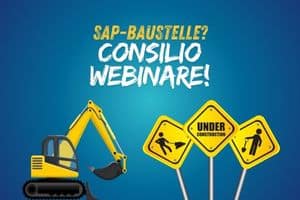In many cases, small things make the difference. That’s also true for industrial settings. Pressure compensation seals, or PCS for short, are a case in point. At first glance, the typically round membranes appear totally unspectacular. However, in electronic applications, they play a crucial role by compensating for pressure differences and protecting sensitive electronics against dust, dirt, and liquids. We talked to Adrian Marggraf, product manager for pressure compensation seals at Schreiner ProTech, about current developments in the industry.
Adrian, although the year is almost over: what trends have emerged in the field of pressure compensation seals (PCS)?
We’re noticing a lot of momentum at the moment. Membrane technology is playing a major role in electrification because pressure compensation seals support a wide range of functions without which that megatrend could not be made a reality: the larger the number of different electronic components you have in a vehicle, the more pressure compensation seals you’ll need to ensure perfect performance of the individual components—reliably, independently of each other, and, above all, across a vehicle’s entire service life. And that doesn’t begin when you first start your engine or motor but as early as during shipment and installation of individual components: you can’t ship an electronic component across the ocean just like that because temperature fluctuations, pressure differences, dirt, and dust, etc., etc. come into play. If worse comes to worst, that’s the end of a component even before it starts being used. Consequently, a PCS plays an important part in terms of supply chain stability, so it was foreseeable that electrification would give pressure compensation seals a certain boost. I currently find the momentum in the field of fastening options even more exciting.
Could you briefly explain what you specifically mean by that?
Self-adhesive versions are still the front runners but a lot has been happening in the field of ultrasonic welding in recent years. Longitudinal ultrasonic welding of membranes has been a commonly used method for joining components and pressure compensation seals for a long time. However, ultrasonic welding technology has been subjected to further development and that’s where we’re seeing new options for our customers. So far, the commonly used method of longitudinal ultrasonic welding has not been feasible for membranes of greater mechanical sensitivity. Those membranes are used whenever higher airflow rates are required. We’re currently working together with a leading manufacturer of ultrasonic welding systems and expect being able to present a solution supporting a reliable process before the end of the year. That would truly be a major step ahead! Why? Because, on the one hand, ultrasonic welding supports industry’s growing requirements for Technical Cleanliness and on the other, because it enables ONE welding method to be used for a wide variety of pressure compensation seals. For customers, that specifically means more flexibility in selecting the right PCS solution.
Is the automotive sector going to remain a focal point of uses for pressure compensation seals?
Even though PCS are used in a wide variety of other applications, my answer is a clear yes. When we’re talking about mobility of the future, it’s not only about electrification but also about miniaturization, meaning smaller and lighter-weight components. For instance, we’ve created a product version, PCS HighProtect, that despite minimal component height and reduced weight withstands even steam jet cleaners and represents a viable alternative to previous snap-fit or bolted versions. In my view, the dynamic development in the automotive sector is going to continue and companies that are flexible, responsive, and innovative are no doubt going to use those trends to gain competitive advantages and to potentially develop new business fields as well.
Adrian, thank you very much for the interview!
Low height, great protection: the PCS HighProtect from Schreiner ProTech with protection class IPX9K
Adrian Marggraf, Product Manager Pressure Compensation Seals at Schreiner ProTech, in conversation with “OEM und Lieferant”
Ventilation and air extraction from housings | Schreiner Group (schreiner-group.com)
High-tech labels for mobility by Schreiner ProTech | Schreiner Group (schreiner-group.com)





